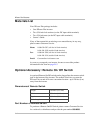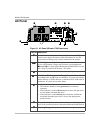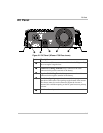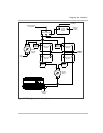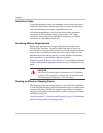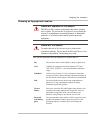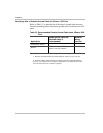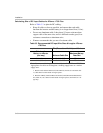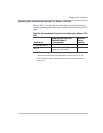
Installation
3–4
Installation Codes
Governing installation codes vary depending on the location and type of
installation. Electrical installations must meet local and national wiring
codes and should be performed by a qualified electrician.
In residential applications, electrical codes do not allow permanent
connection of AC distribution wiring to the inverter’s AC output
receptacles. The receptacles are intended for temporary (as-needed)
connection of cord connected loads only.
Calculating Battery Requirements
Battery type and battery size strongly affect the performance of the
XPower Plus. Therefore, you need to identify the type of loads your
inverter will be powering, and how much you will be using them between
charges. Once you know how much power you will be using, you can
determine how much battery capacity you need. Xantrex recommends
that you purchase as much battery capacity as possible.
Consult Appendix B “Battery Types and Sizes” for a detailed explanation
of how to determine the appropriate number and size of batteries for your
needs.
Choosing an Effective Charging System
The charging system must be appropriate for your particular installation.
A well-designed charging system will ensure that power is available when
you need it and that your batteries remain in top condition. Inadequate
charging will degrade system performance, and the wrong type of charger
will reduce battery life.
Consult Appendix C “Alternators and Charging Systems” for information
about choosing an effective charging system.
CAUTION
The XPower Plus must only be connected to a 12 volt battery
system. It will not operate if connected to a 6 volt battery and
will be damaged if connected to a 24 volt battery.



